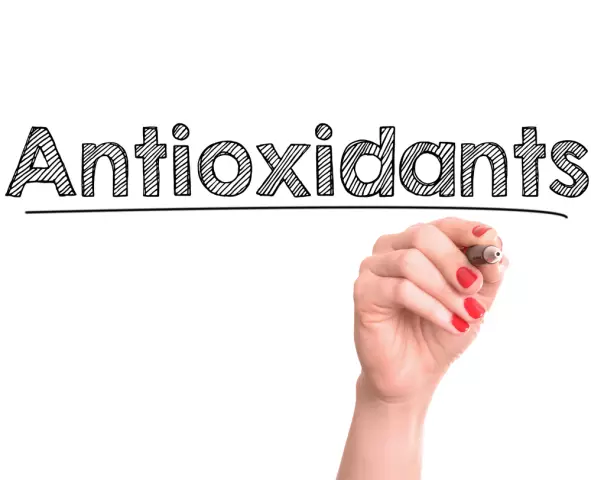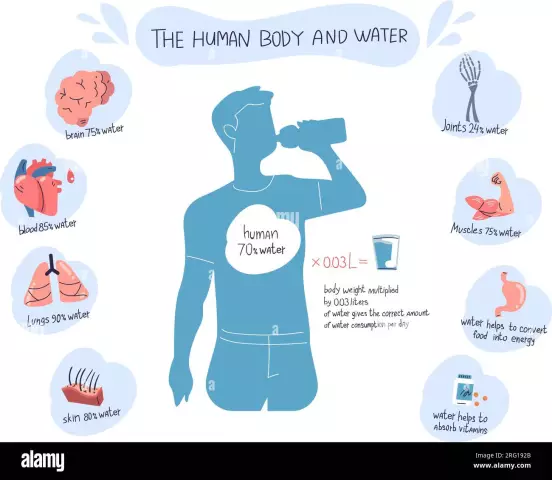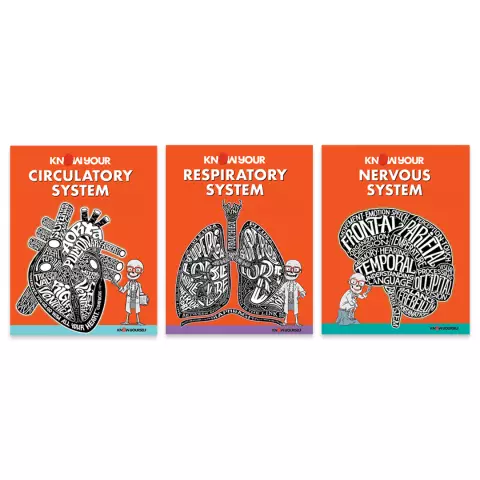- Author Rachel Wainwright [email protected].
- Public 2023-12-15 07:39.
- Last modified 2025-11-02 20:14.
Antioxidants

The desire of mankind to prolong life is understandable and fully coincides with the general medical focus, the priority of which is the prevention of diseases and a speedy recovery. The development of biochemistry made it possible to find means that help against all diseases and prolong life. These are antioxidants that are used in any cell damage. To understand how conventional substances can prevent or cure diseases, it is necessary to understand the mechanisms of their action. The prefix "anti" means "against" or "instead of". This implies the replacement of one substance with another, from the point of view of medicine, useful instead of an aggressive one.
How do oxidants appear, how they are dangerous to humans
All vital processes in the organism of a living being occur at different levels, which are interconnected and interdependent. Antioxidants work at every step. Hierarchy of functional structures:
- The cortex of the cerebral hemispheres;
- Subcortical nuclei - centers of regulation (respiration, blood circulation, reflex activity, etc.);
- Organ systems: cardiovascular, respiratory, digestive, reproductive, motor and sensory systems;
- Organs themselves: heart, lungs, liver, kidneys, endocrine glands, etc.;
- The cells that make up the tissues of a living organism;
- Atoms in the form of neutral or charged particles: anions and cations.
The lowest level (atomic) is capable of canceling both the conscious and subconscious human activity. The basis of regulation is laid in the redox processes, which are in complete equilibrium under normal conditions. How much oxidized products are released, the same amount is produced by antioxidants - enzymes that neutralize the destructive effect of free radicals. They have a powerful charge that requires immediate interaction with normally charged particles. Free radicals knock electrons out of atoms, converting them also into oxidants. The reaction continues along the chain and forms a vicious circle. Without antioxidants, cell membranes are destroyed. Massive cell death leads to a slowdown in the functions of the organs that make up the system. As a result, the impulses of the subcortical nuclei and cerebral cortex do not reach the target. The process of destruction of cellular structures accompanies absolutely all diseases and causes the progression of aging in the body.
Antioxidant action
Free radicals are formed when organs and systems are damaged caused by harmful factors, such as:
- Increased air and body temperature;
- Ultraviolet, infrared, radioactive radiation;
- Infectious agents, pathogens.
Under natural conditions, oxidants destroy foreign cells and microorganisms. When there are more free radicals than the required amount, destructive processes begin in healthy cells and organs.
Antioxidants bind off aggressive radicals, turning them into normal atoms that do no harm. This is done simply: the oxidant receives the missing electron and turns into a cation - a charged particle, but safe for the surrounding cells. Thus, the action of antioxidants is directed not at the destruction of dangerous chemical elements, but at the neutralization of aggressive particles. At higher levels (cellular, organ and systemic), the following processes occur:
- Restoration of cell membranes;
- Increasing the functional activity of organs and systems;
- Prevention of aging of body tissues.
This is why antioxidants are considered cures for all diseases.
Free radical scavenger
Only atoms that have additional electrons that oxidants lack are capable of neutralizing charged particles. In the body, a special enzyme, a natural antioxidant, superoxide dismutase, copes with this task. If the amount of under-oxidized particles increases, the supply of detoxifying agents from the outside is necessary. Substances that are capable of exerting the effect of antioxidants belong to the group of vitamins of the following groups:
- Ascorbic acid (C);
- Tocopherol (E);
- Betta-carotene (A);
- Flavanoid (PP).
Vitamins are not formed in the human body, but they are found in some foods.
Natural antioxidants
Substances that neutralize aggressive particles are contained in grapes. Biochemists drew attention to the life expectancy of the French, who smoke and drink, but for some reason live longer than other Europeans. It turned out that the French owe this to their habit of drinking red wine as a soft drink and tea. But not only wine contains natural antioxidants, grape juice also has a sufficient amount of vitamin C. In addition, the following vegetables and fruits have an increased content of ascorbic acid:
- Citrus fruits: oranges, tangerines, lemons, limes;
- Berries: strawberries, currants, viburnum;
- Vegetables: tomatoes, bell peppers, wild garlic, spinach, steamed potatoes.
Less active, but longer acting natural antioxidants belong to the fat-soluble E vitamins. Tocopherol is found in any foods that contain animal or vegetable oil. These are cereals, nuts, green vegetables, fish and seafood. In addition, vitamin E is found in dried apricots and prunes.
A separate group represents products containing antioxidants, precursors of vitamin A and beta-carotenes. Their action is directed specifically at the skin, immune cells and the visual analyzer. Most of the beta-carotenes are found in yellow vegetables and fruits: apricots, melon, pumpkin, carrots. Also, the antioxidant vitamin A contains animal products:
- Butter;
- Dairy products;
- Egg;
- Fatty fish.
Blueberries occupy a special place among antioxidants, as they contain the highest amount of beta-carotene in terms of the weight of the product.
Products known for a long time containing antioxidants of the flavanoids group:
- Cocoa and green tea;
- Grapes, cherries, cherries, raspberries;
- Pomegranates.

Weaker natural antioxidants such as tannin and lipocaine are found in coffee, black tea, and tomatoes.
Pharmacological antioxidants
These are synthesized vitamins. It must be remembered that ascorbic acid, as an antioxidant, is stronger when administered intravenously and intramuscularly. Capsules containing oil with antioxidants, vitamins A and E. Fat-soluble vitamins cannot be produced in solid forms, because oil does not mix with water.
Overdose and hypervitaminosis
In case of excessive intake into the body, antioxidants "neutralize" the necessary free radicals, the activity of which is aimed at utilizing obsolete and destroying cancer cells. Therefore, it is not recommended to get involved in taking antioxidants without a doctor's prescription.
Found a mistake in the text? Select it and press Ctrl + Enter.






